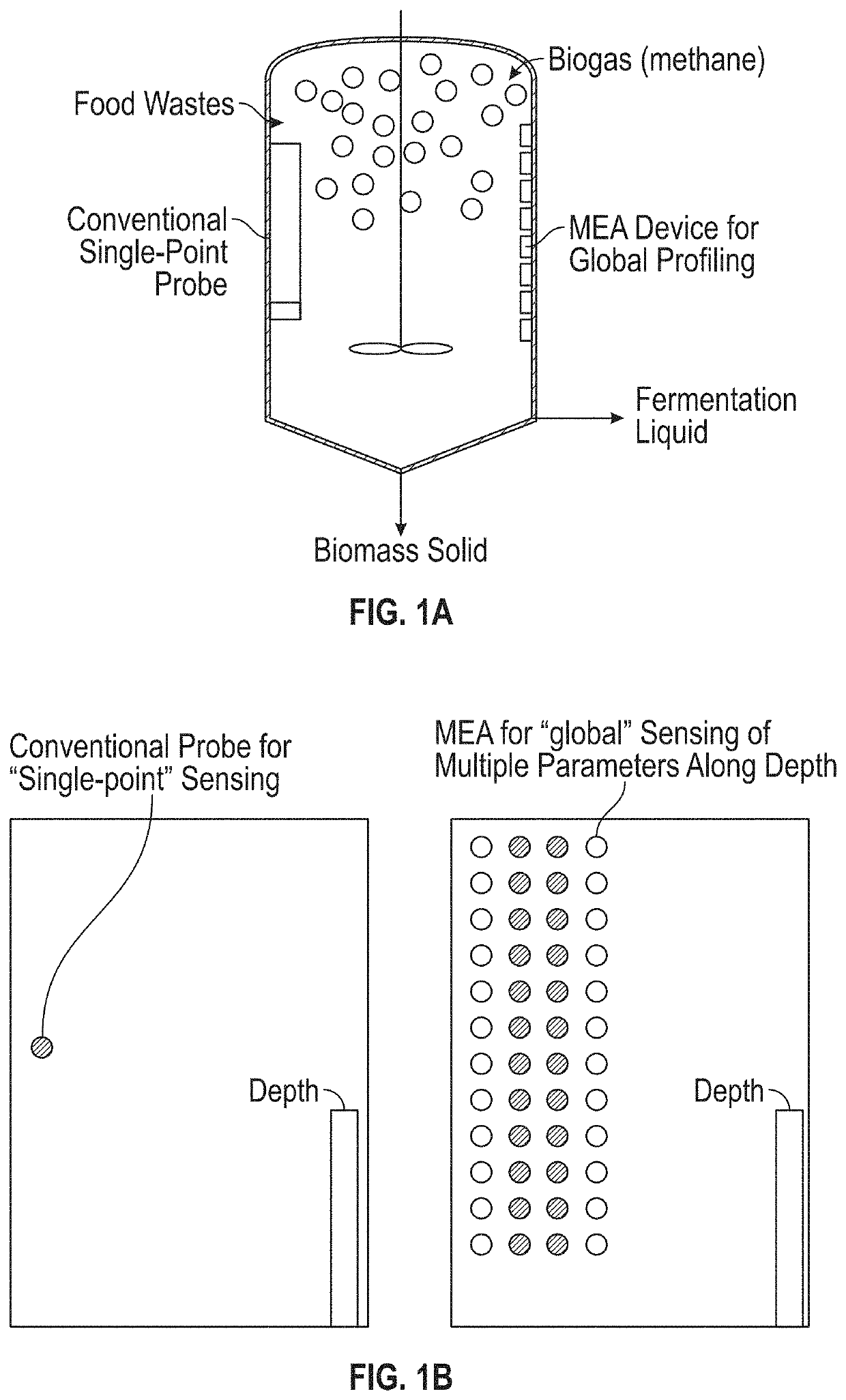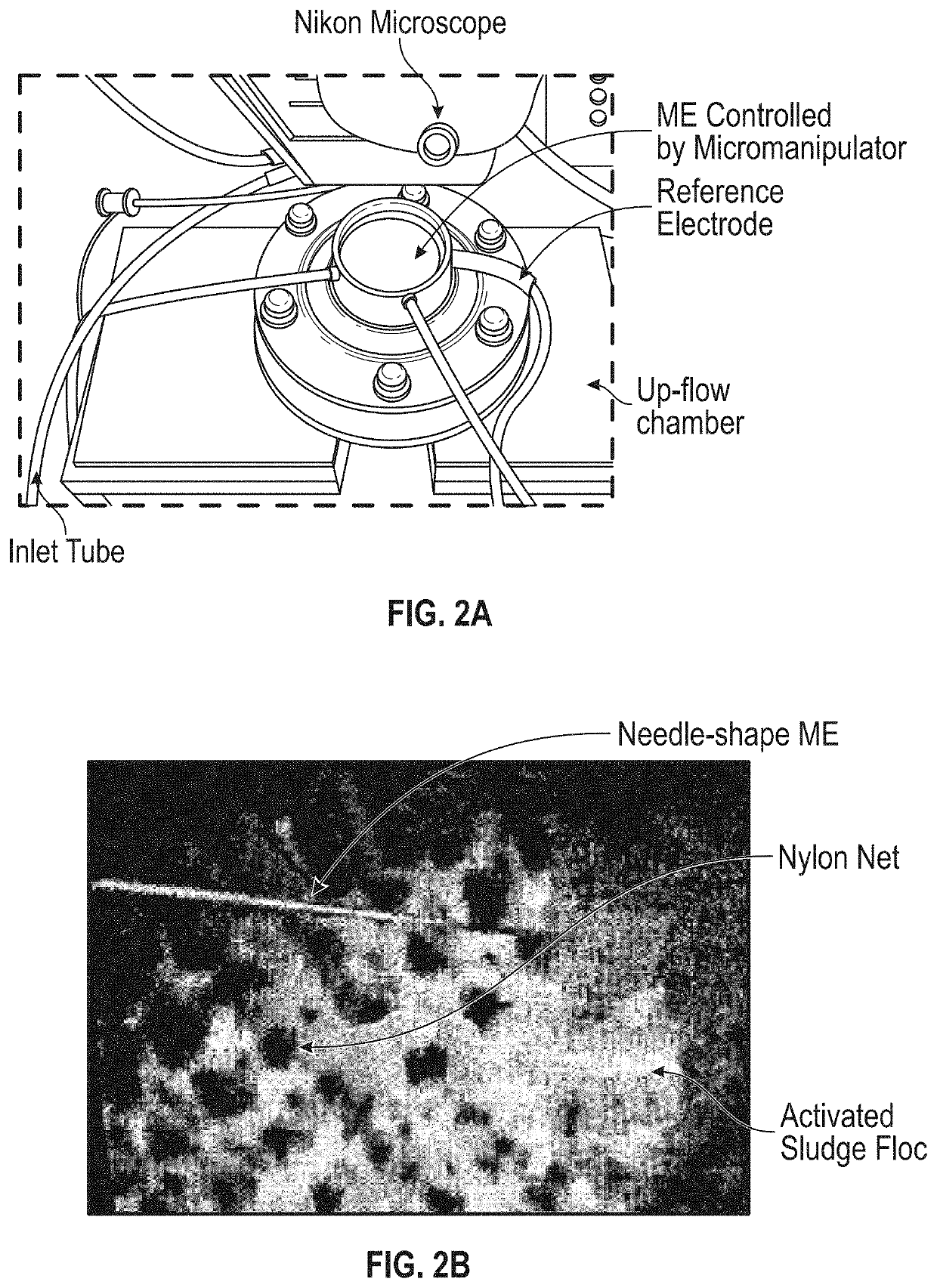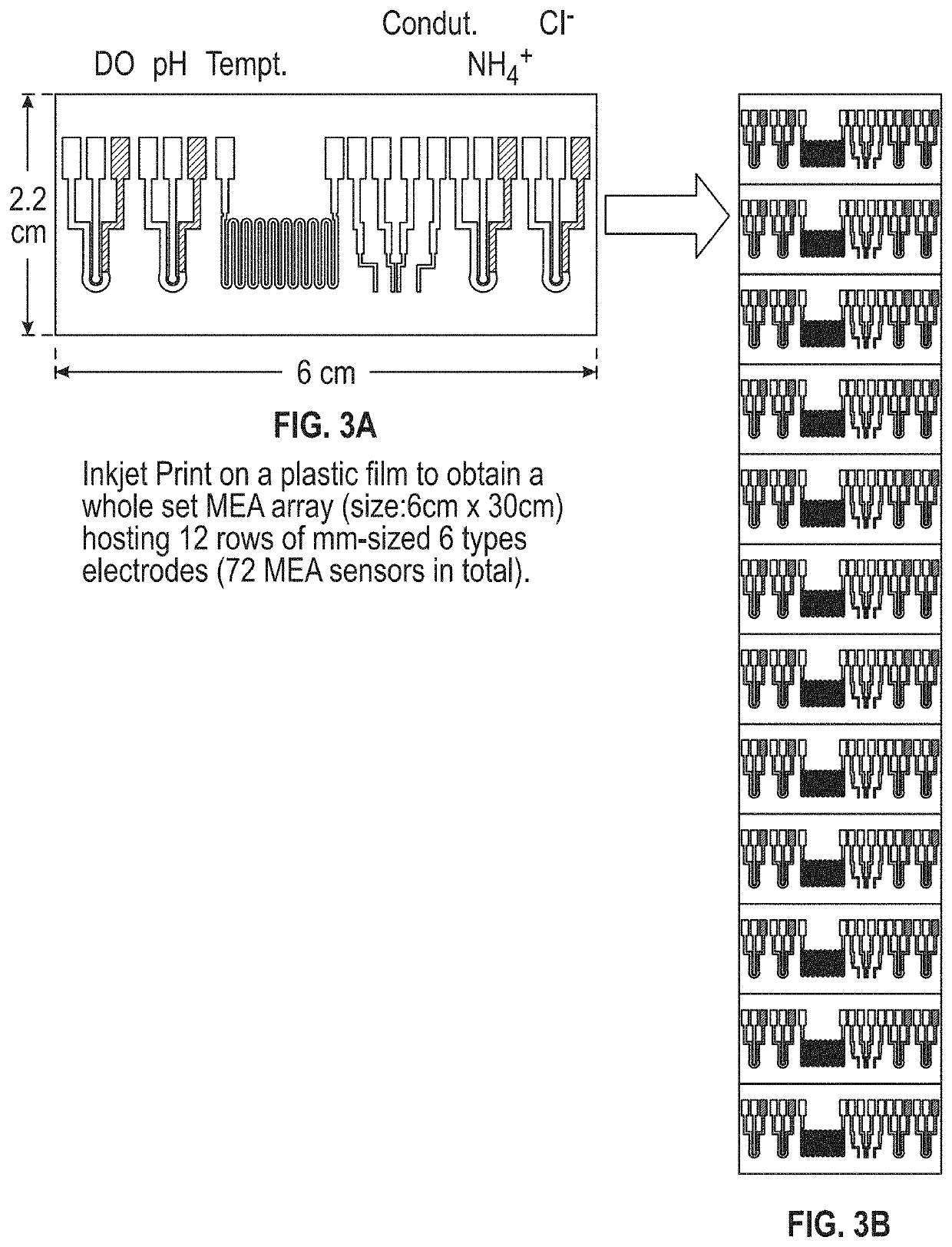Real-time in situ sensing of water-related parameters using micro-electrode array
a micro-electrode array and sensor technology, applied in the field of sensor assemblies, can solve the problems of inefficient single-channel monitoring and high cost, and achieve the effect of high determination coefficient and high accuracy of mea sensors
- Summary
- Abstract
- Description
- Claims
- Application Information
AI Technical Summary
Benefits of technology
Problems solved by technology
Method used
Image
Examples
example 1
[0089]The present disclosure provides for the development of a durable, inexpensive milli-electrode array (MEA) technology / assembly by employing multiple mm-sized electrodes on a flexible plastic film that can be easily installed inside waste treatment systems to rapidly profile multiple parameters with high temporal and spatial resolution.
[0090]For exemplary MEA assembly fabrication, gold and carbon ink prepared for each type of mm-sized electrode can be precisely printed on a flexible Kapton film using an ink-jet printer (FIG. 8). Different types of electrodes are laid out in a row. Multiple rows of mm-sized electrodes vertically compose a MEA matrix capable of simultaneously measuring multiple parameters along system depth, and thus elucidating the heterogeneous status inside systems.
[0091]The horizontal distance between each type of electrodes can be 0.30 cm, which is far enough apart to prevent the interference between different types of electrodes during measurement. Each elec...
example 2
[0098]Four types of MEA sensors targeting critical water-quality parameters (two physical parameters: temperature and conductivity; two chemical parameters: DO and pH) were fabricated using IPT technology. Precise patterning of multiple mm-sized electrodes on a flexible plastic film was achieved. The electrodes are adapted for easy installation inside treatment systems to rapidly profile multiple parameters, and thus elucidate the heterogeneous status of systems for decoding the “black box” and executing proactive control strategies.
[0099]Four tasks were undertaken and completed in connection with this Example 2. First, physical MEAs (temperature and conductivity) were fabricated and then calibrated using standard linearity models by measuring the resistance of MEAs. Second, chemical MEAs (pH and DO) were fabricated and then calibrated using the electrochemical method to establish the standard linearity model between the MEA signals with pH and / or DO. Third, the sensitivity and accu...
PUM
| Property | Measurement | Unit |
|---|---|---|
| width | aaaaa | aaaaa |
| length | aaaaa | aaaaa |
| diameter | aaaaa | aaaaa |
Abstract
Description
Claims
Application Information
 Login to View More
Login to View More - R&D
- Intellectual Property
- Life Sciences
- Materials
- Tech Scout
- Unparalleled Data Quality
- Higher Quality Content
- 60% Fewer Hallucinations
Browse by: Latest US Patents, China's latest patents, Technical Efficacy Thesaurus, Application Domain, Technology Topic, Popular Technical Reports.
© 2025 PatSnap. All rights reserved.Legal|Privacy policy|Modern Slavery Act Transparency Statement|Sitemap|About US| Contact US: help@patsnap.com



